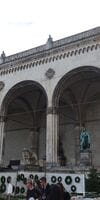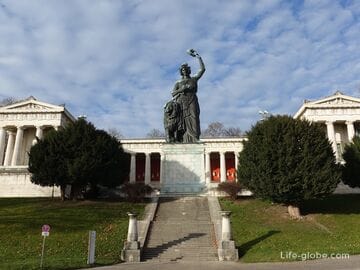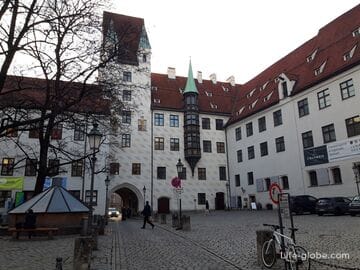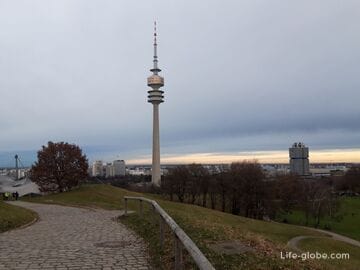Feldherrnhalle - the so-called "Hall of Bavarian Generals", may be known as the Arcade of Generals, Munich's Gallery of Generals or the Hall of Field Marshals.
Feldherrnhalle is a monumental loggia and a monument, a symbol of military glory of Bavaria.
During the history Feldherrnhalle been ambivalent glory.
Feldherrnhalle was built by Friedrich von Gaertner, on behalf of king Ludwig I in the years 1841-1844, to honor the glory of the Bavarian army and its victorious generals. A model for the construction Feldherrnhalle was the Florentine Loggia dei Lanzi, which was erected in Piazza della Signoria in Florence in the years 1376-1382.
Feldherrnhalle was erected and is now in the place where the historic centre of Munich moves to a new town and the Ludwigstrasse street (Ludwigstraße), which, in turn, leads to the famous arc de Triomphe - the Victory gate (Siegestor), originally dedicated to the glory of the Bavarian army.
"Hall of the Bavarian generals" is a monumental loggia with columns and bilateral arcades, the centre of which a broad staircase. Both sides of the staircase is surrounded by large stone figures of lions, created by Wilhelm von Ruemann in 1905-1906.
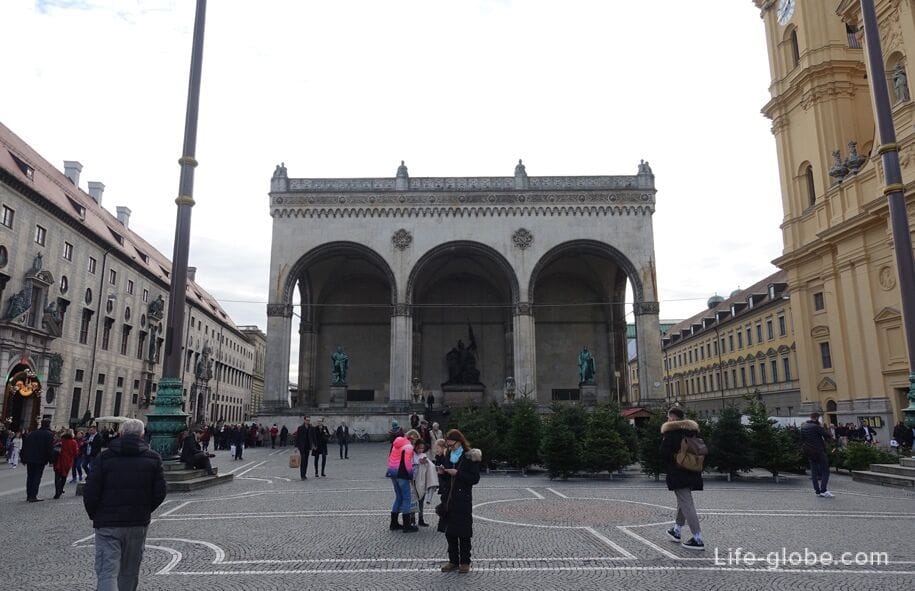
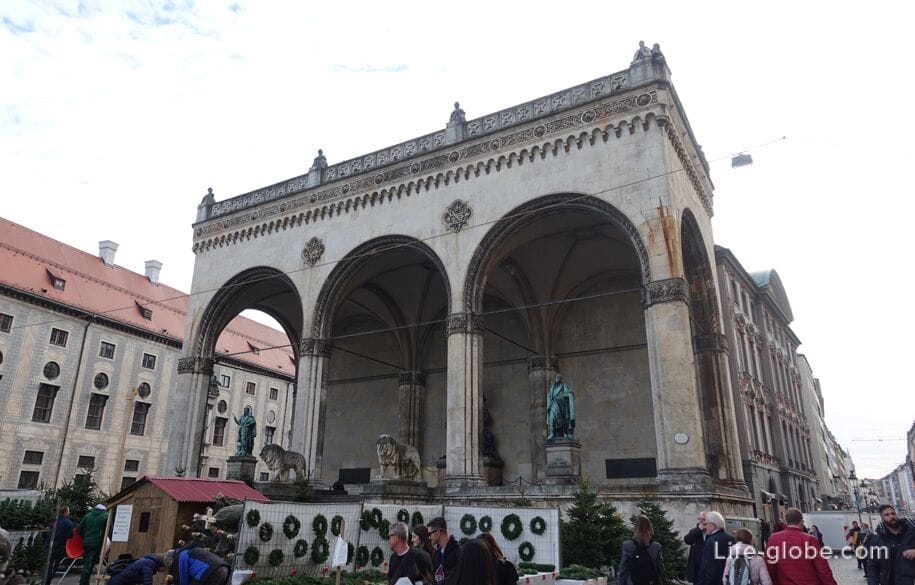
In most balconies are sculptural images of the field Marshal: the Earl Johann Tilly, who led the Bavarians in the Thirty years war, and Prince Karl Philip von Wrede, who led the struggle against Napoleon. The statue was created by Ludwig von Santanera gunmetal (gun melted).
Central to the balconies of the monumental sculptural group "a monument to the Bavarian army", established in memory of the Franco-Prussian war. The monument was made according to the sketch of the sculptor Ferdinand von Miller, installed in 1892 in the embodiment of victory over the French and unification of Germany.
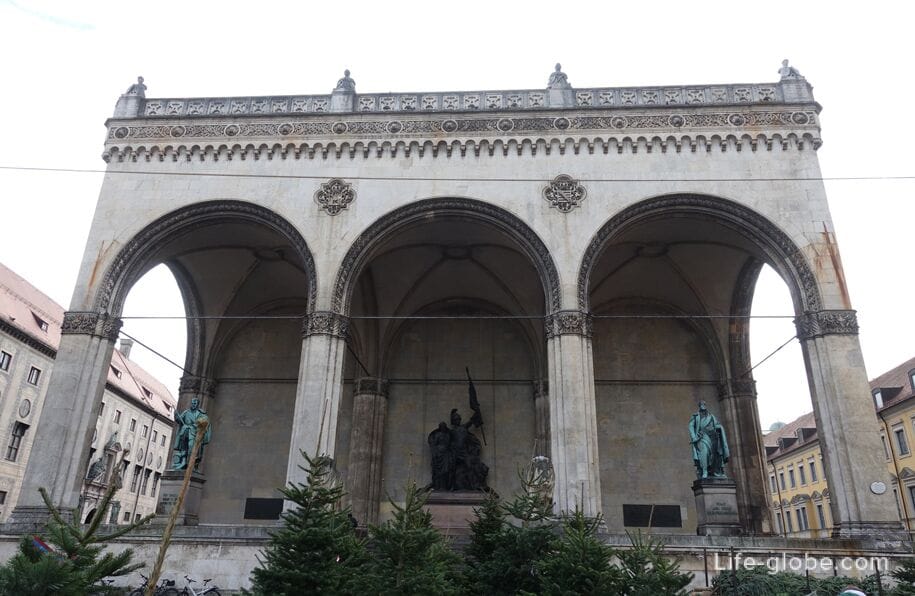
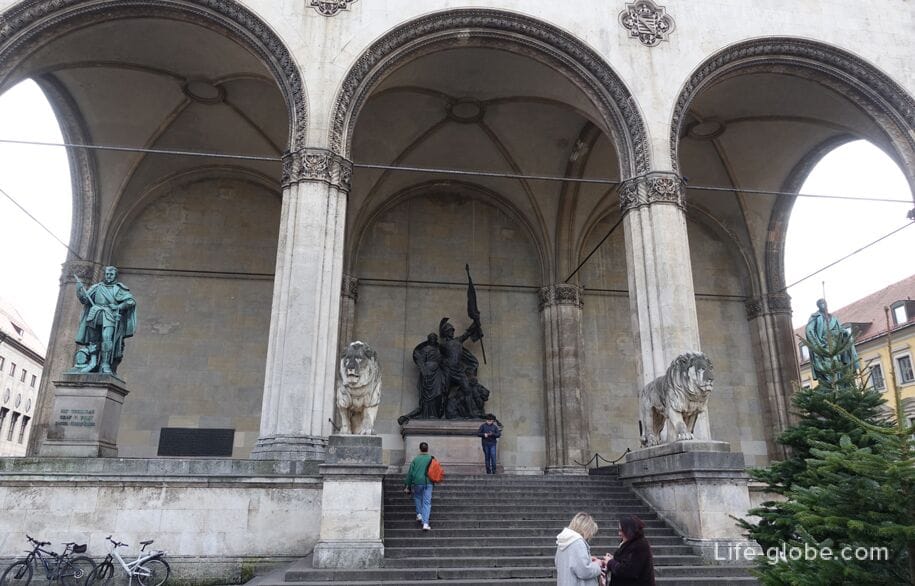
The dark side of history Feldherrnhalle
Feldherrnhalle, in addition to the impersonation of a United Germany and symbol of military glory of Bavaria, was also involuntary and silent "participant in the" Beer hall putsch, 1923, after which he was notorious.
November 8-9, 1923, occurred the so-called "Beer hall putsch" when Adolf Hitler and Erich Lundendorff staged a coup attempt, which began in the beer hall of Burgerbraukeller, while nearby, which was stopped near Arcade generals, where he clashed with the Nazis and Bavarian police. Then on the square near the Hall of fame, died 16 Nazis and 4 policemen.
In 1933, after the Nazis came to power, loggia Feldherrnhalle became the focus of national-socialist propaganda and turned into a monument to the Nazis. On the East wall was a memorial plaque with the names of deceased participants in the coup attempt in 1923, which was called Mahmal der Bewegung (Mahnmal der Bewegung). Memorial plaque was mounted a guard of honor. Each passing of this memorial Board was required to salute in a Nazi salute. To avoid this ceremony, many passers-by avoided Feldherrnhalle from the rear.
Also Feldherrnhalle a column was installed with the flame. SS recruits took the oath of allegiance to Hitler in front of the memorial.
The area in front of Feldherrnhalle was used for SS parades and commemorative meetings, including annually commemorated the anniversary of the putsch-1923.
At the end of the war Feldherrnhalle was restored to its pre-Nazi form. The locals broke the Nazi plaque on the pieces on 3 June 1945.
25 April 1995 Reinhold elstner a veteran of the Second world war, committed self-immolation in front of Feldherrnhalle in protest against "the ongoing official slander and demonization of the German people and German soldiers".
Location Feldherrnhalle
Feldherrnhalle is located on the Northern edge of Munich's Old town, on the square Odeonsplatz (Odeonsplatz), near Munich residence and the Hofgarten Park, in walking distance from the Central square of Munich (Marienplatz).
Open, the North side Gallery generals goes on to Odeonsplatz and the South - a closed part adjacent to the Palace of Praising.
Palace Preising
Preising Palace (Palais Preysing) is a mansion in the Rococo style, which was the residence of the counts of Pasinkov (Preysing) and was built between 1723 and 1728 years.
The Palace was damaged during the Second world war. After it was restored according to old projects and now the building houses shops and offices. Read more about Palace of Praising...
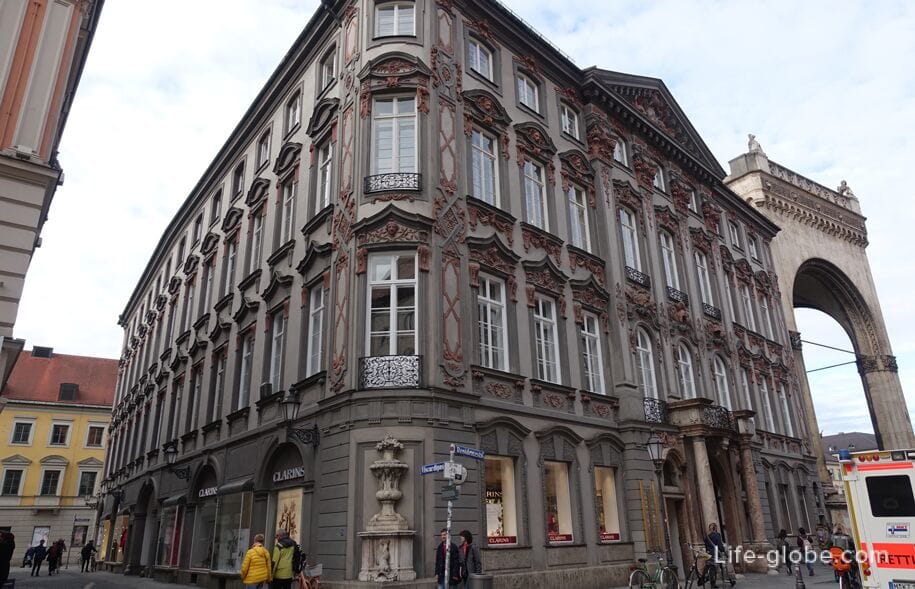
During the Nazi regime, not to salute in a Nazi salute near the plaque placed on the wall Feldherrnhalle, the locals with the goal to get to Odeonsplatz, I walked around the Gallery of the generals is over, - out, grasping and avoiding thus the Palace of Praising. As the locals passed through a small lane behind the Palace, which is referred to as "Brokeragelink" ("Drückebergergassl") is an alley to evade pressure or lane Shirker.
Today this little street, once the workaround is called Biscarrosse (Viscardigasse). On the street, in memory of civil resistance, equipped with wavy stripe paving Golden color is a symbolic sign of remembrance and a monument to civil courage of the residents of Munich.





